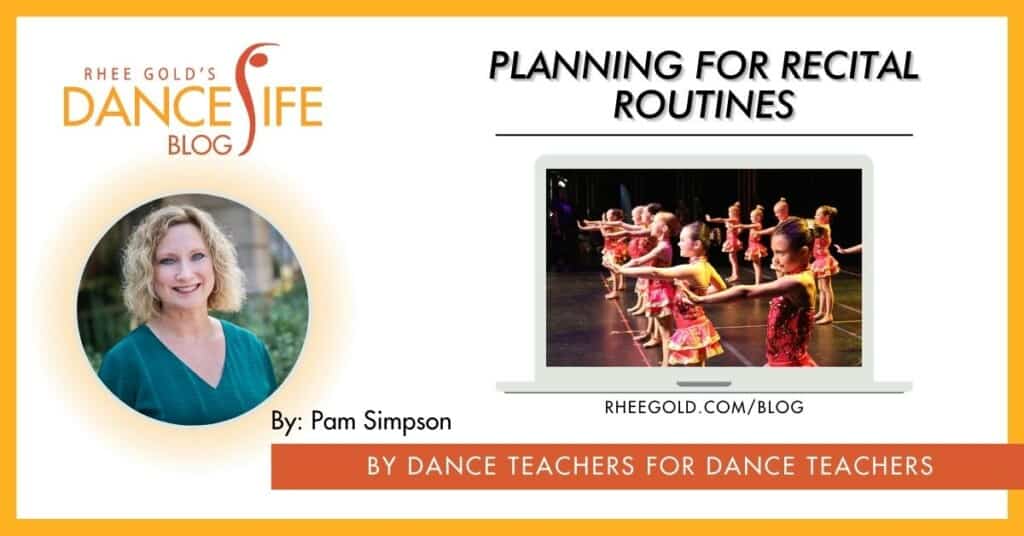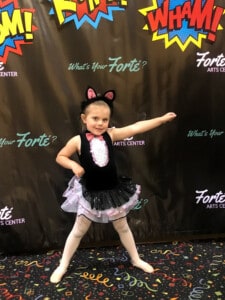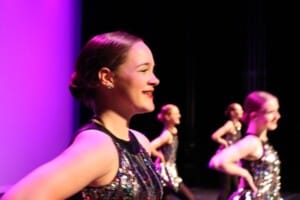Planning for Recital Rooutines

It is that time of year, time to choreograph and teach recital routines. This is a very exciting time, but it can also be a stressful time if you do not prepare properly. It is important to set aside some time to plan your choreography to ensure a successful routine.
Recital time is my favorite time of year. I love planning the show, the costumes,
songs, and routines. At our studio we have set up a system for all of these items to
ensure our recital runs smoothly, is entertaining, and organized.
Over the years, I have seen teachers do a great job planning their routines and I
have seen teachers wing it through the year, resulting in stressed out students and a mediocre recital. A little preparation can go a long way.
When we are beginning preparation for our recital routines there are many things
to consider. Over the next few months, I am going to share tips and tricks for
successful recital routines in this blog to help everyone build great recital routines
and ensure their students are confident and look great on stage.
When Planning choreography keep these things in mind:
➔ Always showcase students at their best
➔ Teach them how you want them to perform right away
➔ Build their confidence so they will give it their all
➔ Encourage them to always dance full out
➔ Be creative. BE YOU!
Plan for Success
- Plan the dance out ahead of time.
- Consider style, theme, number of students, age, and skill level.
- Count out the music.
- Make hash marks for each set of 8 counts. Divide sections by the number of weeks you have to teach the routine.
- Map out the routine.
- Map out the different sections and plan for unison, canons, levels, etc.
- Plan Formations
- Spend time planning what formations will work for the routine.
- Consider age and level when deciding how many formations.
- Decide what transition steps you will use in the routine and start practicing them before you begin the choreography. The transition steps should be something that they can execute well and are very comfortable with.
- I like to teach the transition steps during the progression portion of my class in the fall, so when we get to the recital routine, they are comfortable with the movement.
Now, once you have the routine planned, it is time to stay organized. I suggest notating the dance in the way that is the most comfortable for you. That may be a notebook and pen, a google doc, or a spreadsheet. Whichever method you select, be sure to keep it organized and up to date.
I prefer to use a Google Sheet. I keep a tab for each class. I insert links to the music as well as to the video I take each week as we are learning the routine. This helps me stay organized and have everything that I need at my fingertips.
While choreographing the routine:
- Make sure the steps you are including are steps they can master without
you. - Make sure the end is as strong as the beginning. (Sometimes I teach the end first to help with this.)
- Keep the transitions clean and clear while maintaining energy.
- Plan ahead to ensure you stay on track. Always allow extra time in your
schedule for unexpected things. This reduces stress and makes the experience more enjoyable. I always allow an extra four weeks than I need to complete the routine. - I suggest making a timeline to follow. Set it up to be before your studio
owner requires the dance to be completed. - Choreograph for impact!!! I always say HIGH impact, low difficulty is the way to go for recital routines. Consider what steps have a high impact that your students love doing. Think of it this way, little steps=little impact. Big
steps=big impact.
Theese are some great tips to help you get started on your recital routines for the
season. Stay tuned for next month where I dive a little deeper into the process.
Pam Simpson is the founder, president, and driving force behind Forte Arts Center, which was established in Morris, Illinois in 1993. In addition to building her business from a small, one room studio to a large, multi-location organization that offers dance, tumbling and cheer programs as well as private music lessons, Pam is a leading force in the realm of small business ownership in the dance and tumbling industries as she travels all over the country speaking to and educating for large organizations such as Rhee Gold Company, Dance Teacher Summit, and More Than Just Great Dancing. When not working on her businesses, Pam enjoys spending time with her family and visiting her daughter, who is a performer at Walt Disney World.








